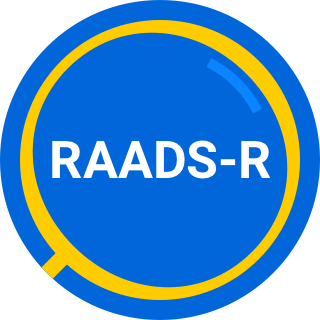Since the questionnaire relies on client self-report, all responses should be verified by the clinician, and a definitive diagnosis is made on clinical grounds taking into account how well the client understood the questionnaire, as well as other relevant information from the client.
The RAADS-R was designed to assist clinicians in diagnosing adults (18+) with suspected ASD. It is designed to be administered by clinicians in a clinical setting. It is not intended to be a mail in or an online screening instrument. The questions are designed for individuals with average IQ and above. This is a population with mild or subclinical ASD. These individuals often escape diagnosis. The RAADS-R was specifically designed to capture that population.


